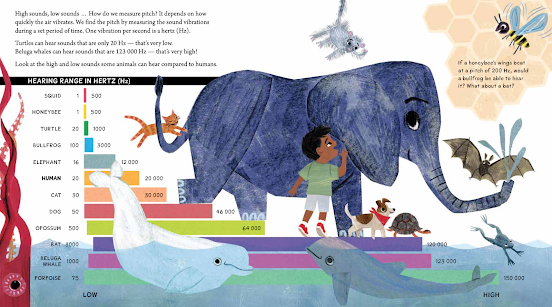Written by a Grammy-winning musician, Girl on Fire is Alicia Keys’ latest project. Aimed at mature middle-schoolers, this graphic novel is a good book for easing students into heavier reading with more complex themes. The book is illustrated by Brittney Williams.
Girl on Fire stars Lolo Wright, a Black girl who lives in the Monroe Housing Projects. Lolo thinks she’s normal, albeit smarter than all her classmates, until a police officer assaults her brother. Before even Lolo knows what she’s doing, the police officer is floating above the ground. Lolo discovers she has the ability to lift and manipulate objects, including people. Soon, she’s bombarded with visions of a classmate and former friend, Michael Warner. As Lolo and her family come to terms with her new powers, a powerful drug dealer, Skin, tries to enlist Lolo so that he can use her abilities. Michael has already started working for Skin, and he’s put in charge of bullying Lolo’s family so that Lolo will fall in line with Skin’s orders. With so many variables, Lolo knows that it’s up to her to make sure that her family and friends are protected. Will she succeed in keeping her family safe, or will the pressure be too much for her?
Although there are some redeeming qualities to this book, for the most part, it reads like a bad publicity stunt. Each chapter, and even the title of the book, all share names with an Alicia Keys song. The book even ends with a verse from the song Girl on Fire. Aside from the branding involved in her book, Alicia Keys also creates a plot that both overwhelms and leaves something to be desired. Lolo Wright is a normal girl who’s trying to make a better life for herself. While battling drug dealers. And handling her new superpowers. And dealing with the sudden reappearance of her mother. In between standing up for herself to the school bullies and realizing it’s okay to be smart and confident in yourself. Plus, she has a love interest, as does her brother. Even with all of these concurrent plot lines, the ending is a bit of a Deus Ex Machina, and Lolo doesn’t progress much as a character. Various themes are introduced, then dropped, leaving many questions to be answered. For example, Lolo’s connection with Michael is never fully explained. There are also various disposable characters that serve no real purpose other than to add “depth” to the story.
Even though this novel is written for middle schoolers, this graphic novel is an awfully graphic novel. There are drug dealers, murders, various explosions, and four near-death experiences. Lolo Wright and her family, especially her brother and father, go through a lot of bad experiences over the course of the book. High schoolers might be better suited to this book, or at least rising high schoolers.
Plot holes aside, Girl on Fire ultimately tells a story of perseverance. Lolo Wright stands her ground and sticks to her morals and earns the ending she deserves. The theme of this book is to push through and do things the right way, even if that takes more time and effort. Even with the darker and less appropriate elements found in this story, the message behind it all is moving and empowering. And although readers may be consistently left a bit confused, they’ll certainly be able to relate to the characters in the story. Lolo and her friends and family all have realistic dialogue that stays appropriate for the ages of their characters. Lolo’s self-consciousness, her father’s values, and her friend Nia’s peppy attitude all shine through their words and actions.
In conclusion, Girl on Fire has its share of flaws, but behind it all is a moving story. The novel is ridden with drug dealers and violence, but part of what makes this novel so graphic is the realistic characters and what befalls them. For mature Alicia Keys fans, Girl on Fire is a good introduction to darker themes for rising high schoolers. The illustrations in this book will draw readers in, but the realistic topics and characters will be what hook them.
Don't forget to check out Greg Partridge's Always in the Middle blog on Monday with lots more MG books!























,_circa_in_May_1898_(NH_912).jpg)


















